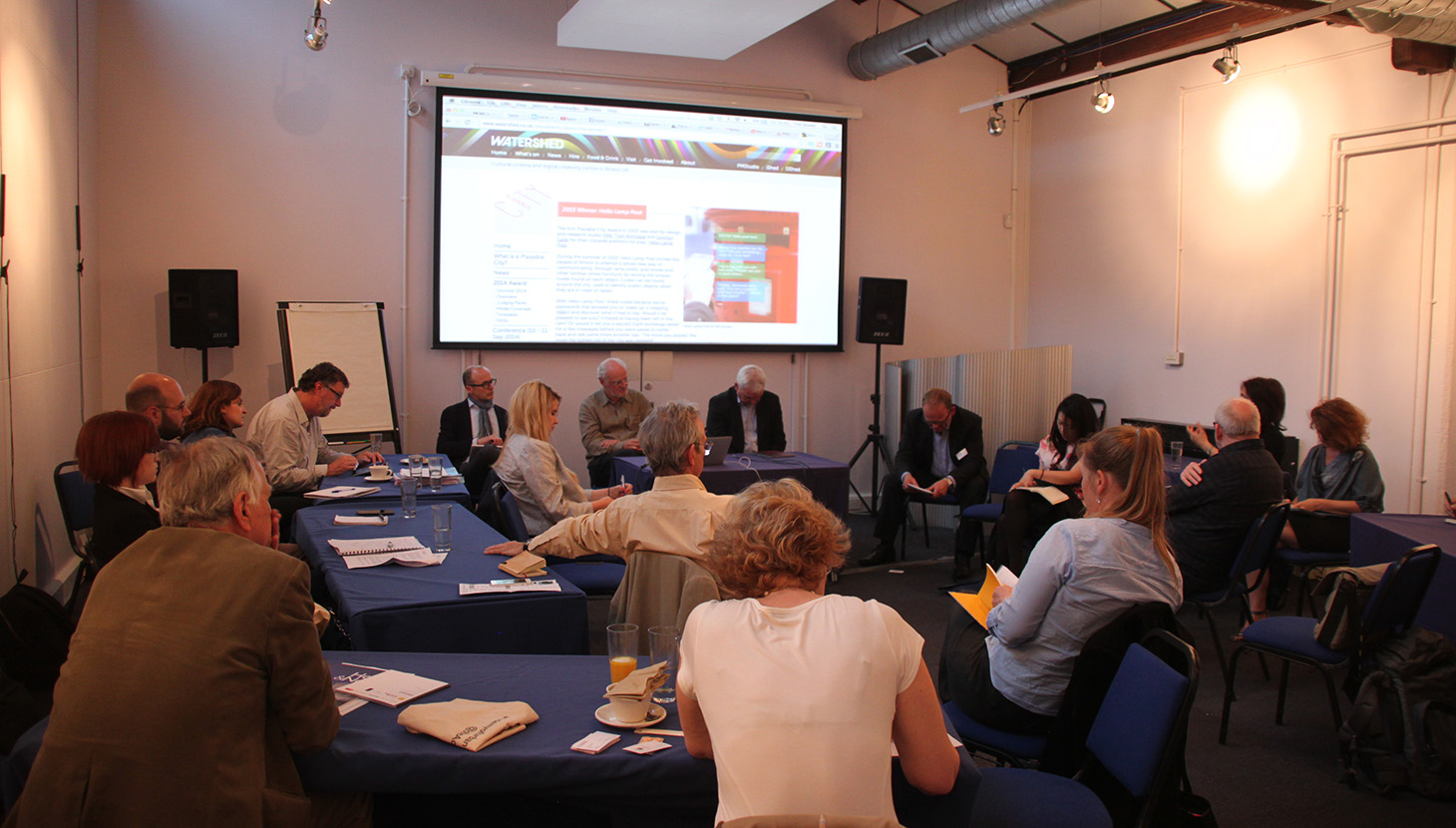 Words by Louise Dredge, Young Urbanist
Words by Louise Dredge, Young Urbanist
Speakers:
Tim Stonor AoU, Director, The Academy of Urbanism
Shane Mitchell AoU, Director, Urban Peer Ltd
Stephen Hilton, Director of Futures, Bristol City Council
Dick Penny, Managing Director, The Watershed, Bristol
Dr Claire Craig, Deputy Head, Government Office for Science
The workshop opened with a question about what exactly the term ‘digital urbanism’ means, relating it to how networks and companies are exploring how technology can support and provide solutions for our cities. Leading the workshop, Academician Tim Stonor emphasised the importance of recognising the connections between technology, cities and human behaviour and acknowledged that cities are already smart, but that technology may provide ways to make them smarter.
A presentation from Dr Claire Craig, Deputy Head of the Government Office for Science, introduced Foresight, the UK government’s futures project, which collects and examines the latest evidence to help the government meet major challenges – including cities, ageing and demographic change. As part of Foresight, the Future of Cities project is currently exploring solutions at local, regional and national levels for how people will live in cities of the future, looking at issues such as built infrastructure, digital systems, urban form, migration and population growth. Claire highlighted the key features of digital urbanism now:
- Our physical and virtual existences are now intertwined
- Use of digital services is at a high ebb
- Our identities are increasingly harder to keep separate and private in a digital world
- There is a growing debate and exploration of individual agency and privacy of data
Claire’s presentation was followed by an exploration of ideas and initiatives related to the virtual public space. Bristol provided a fascinating case study with contributions from Steve Hilton, Director of Futures at Bristol City Council, and Dick Penny, Managing Director at the Watershed, a cross-artform venue and producer in Bristol. From their involvement in early experiments with public access Wi-Fi and projects such as the Playable City (a counterpoint to ‘A Smart City’), Dick and Steven discussed the recent Bristol project ‘Hello Lamp Post’, a way to get people engaged in place and try out a new way of communicating. Members of the public could send text messages to local lamp posts, post boxes and other pieces of street furniture and these messages were fed back to contributors, using technology to give these objects of street furniture a ‘smart’ feature.
Sharing their views on the potential of digital urbanism, both cautioned that digital access is not yet equally distributed, but that we also need to acknowledge the fact that cities are no longer just physical spaces.
There was much to explore within this workshop and the session provided an opportunity to merely touch upon the potential of digital urbanism for our places. Other themes that were raised that warrant further discussion and analysis include:
- The relationship between digital use and social unrest (e.g. riots) and its impact
- Digital engagement and young people
- Social media vs. anti-social media
- Rural access and connectedness to the digital world